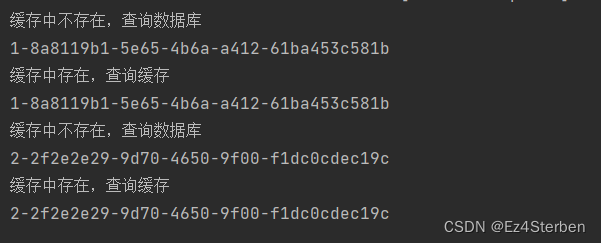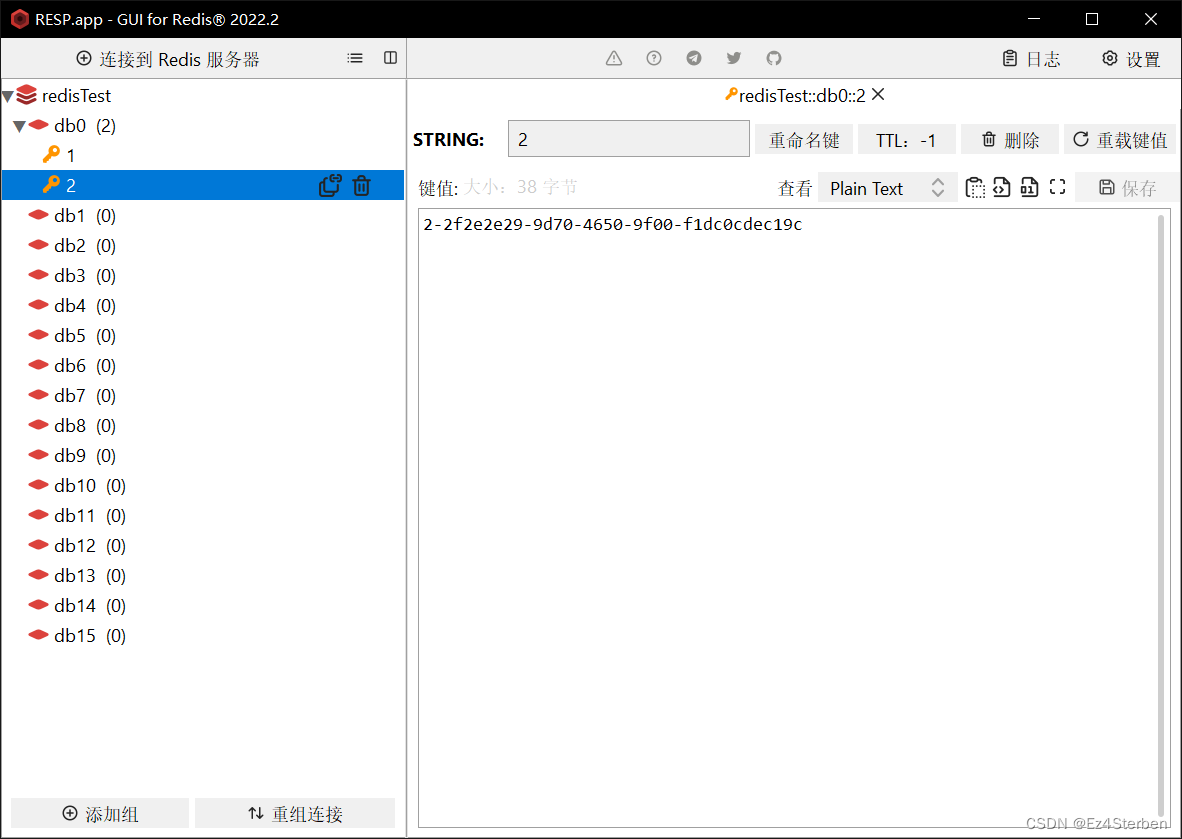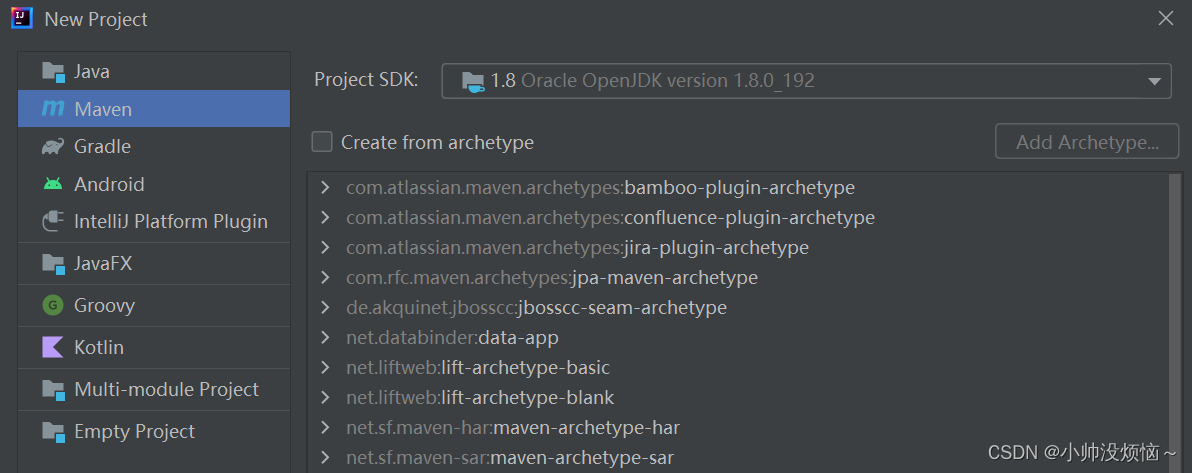一、通过HashMap实现缓存
这种方式可以简单实现本地缓存,但是实际开发中不推荐使用,下面我们来实现一下这种方式。
首先创建一个管理缓存的类
public class LocalCache {
public static HashMap<String,String> cache = new HashMap<>();
static {
String name = 1 + "-" + UUID.randomUUID().toString();
LocalCache.cache.put(String.valueOf(1),name);
System.out.println("id为"+1+"的数据添加到了缓存");
}
}
这个类中有一个静态代码块,静态代码块会在类加载时就执行,我们可以在这里完成对缓存的初始化,决定缓存内一开始就有哪些数据
另外我们还可以把这个类交给spring来管理
@Component
public class LocalCache {
public static HashMap<String,String> cache = new HashMap<>();
static {
String name = 1 + "-" + UUID.randomUUID().toString();
LocalCache.cache.put(String.valueOf(1),name);
System.out.println("id为"+1+"的数据添加到了缓存");
}
@PostConstruct
public void init(){
String name = 2 + "-" + UUID.randomUUID().toString();
LocalCache.cache.put(String.valueOf(2),name);
System.out.println("id为"+2+"的数据添加到了缓存");
}
}
在把类交给spring管理后,在方法上加入@PostConstruct可以使这个方法默认执行
随后我们编写一个接口来测试缓存
@RequestMapping("test")
public String test(Long id){
String name = LocalCache.cache.get(String.valueOf(id));
if (name != null){
System.out.println("缓存中存在,查询缓存");
System.out.println(name);
return name;
}
System.out.println("缓存中不存在,查询数据库");
name = id + "-" + UUID.randomUUID().toString();
System.out.println(name);
LocalCache.cache.put(String.valueOf(id),name);
return name;
}
我们可以看到这两个初始化都被执行了,然后我们调用接口查询id为1与id为2的数据

可以看到我们是先生成了一次UUID存入hashmap,第二次查询时hashmap中存在了,直接从hashmap中获得数据,如此一来我们就实现了hashmap形式的本地缓存
二、通过guava local cache实现
guava cache介绍
实际使用
<dependency>
<groupId>com.google.guava</groupId>
<artifactId>guava</artifactId>
<version>23.0</version>
</dependency>
import com.google.common.cache.Cache;
import com.google.common.cache.CacheBuilder;
import org.springframework.stereotype.Component;
import java.util.concurrent.TimeUnit;
@Component
public class GuavaLocalCache {
private Cache<String,String> fiveSecondCache = CacheBuilder.newBuilder()
//设置缓存初始大小,应该合理设置,后续会扩容
.initialCapacity(10)
//最大值
.maximumSize(100)
//并发数设置
.concurrencyLevel(5)
//缓存过期时间,写入后5秒钟过期
.expireAfterWrite(5,TimeUnit.SECONDS)
//统计缓存命中率
.recordStats()
.build();
public Cache<String, String> getFiveSecondCache() {
return fiveSecondCache;
}
public void setFiveSecondCache(Cache<String, String> fiveSecondCache) {
this.fiveSecondCache = fiveSecondCache;
}
}
下面我们对guava cache进行简单的使用,并尝试其中的命中率统计等功能
@Autowired
private GuavaLocalCache guavaLocalCache;
@RequestMapping("guavaTest")
public String guavaTest(Long id){
// 获取缓存
Cache<String, String> fiveSecondCache = guavaLocalCache.getFiveSecondCache();
// 从缓存中获取对象
String nameCache = fiveSecondCache.getIfPresent(String.valueOf(id));
// 缓存中存在
if (nameCache != null){
System.out.println("缓存命中:" + nameCache + ","+ getCacheStats(fiveSecondCache));
return nameCache;
}
//将数据存入缓存
System.out.println("缓存未命中,"+ getCacheStats(fiveSecondCache));
nameCache = id + "-" + UUID.randomUUID().toString();
fiveSecondCache.put(String.valueOf(id),nameCache);
return nameCache;
}
public String getCacheStats(Cache<String, String> cache){
CacheStats stats = cache.stats();
return "缓存命中率:"+stats.hitRate()+"被清除缓存数:"+stats.evictionCount();
}
首先访问一次id为1的数据,等5秒后再访问一次,然后立刻访问第三次

可以看到缓存未命中两次,其中缓存过期被删除了一次,随后在5秒内立刻访问缓存命中,缓存命中率,被清除缓存数均正确,测试完成
guava cache还有许多没有测试到的功能以及各种淘汰策略和机制,各位可以尝试深入了解。
使用redis实现缓存
redis简介
Redis 是C语言开发的一个开源高性能键值对的内存数据库,可以用来做数据库、缓存、消息中间件等场景,是一种NoSQL(not-only sql,非关系型数据库)的数据库
具体使用
redis的安装以及基本使用欢迎参考我的这两篇博客
redis的简介,Linux安装redis以及jedis的使用
redis中的数据类型以及操作
下面我们介绍在springboot项目中的使用
springboot中有redis的starter我们直接引用即可
<dependency>
<groupId>org.springframework.boot</groupId>
<artifactId>spring-boot-starter-data-redis</artifactId>
</dependency>
在spring配置文件中加入如下设置,这里用的是properties形式的文件,host是部署redis的服务器ip,port是端口号,password是密码,如果没有设置密码不填即可
spring.redis.host=
spring.redis.port=
spring.redis.password=
@Autowired
private StringRedisTemplate stringRedisTemplate;
@RequestMapping("/redisTest")
public String redisCacheTest(Long id){
String name = stringRedisTemplate.opsForValue().get(String.valueOf(id));
if (name != null){
System.out.println("缓存中存在,查询缓存");
System.out.println(name);
return name;
}
System.out.println("缓存中不存在,查询数据库");
name = id + "-" + UUID.randomUUID().toString();
System.out.println(name);
stringRedisTemplate.opsForValue().set(String.valueOf(id),name);
return name;
}
同样的,我们查询两次id为1和id为2的数据

随后我们在redis中查看


可以看到我们确实的把数据存入redis中作为缓存进行读写了
原文地址:https://blog.csdn.net/qq_51383106/article/details/129720597
本文来自互联网用户投稿,该文观点仅代表作者本人,不代表本站立场。本站仅提供信息存储空间服务,不拥有所有权,不承担相关法律责任。
如若转载,请注明出处:http://www.7code.cn/show_15465.html
如若内容造成侵权/违法违规/事实不符,请联系代码007邮箱:suwngjj01@126.com进行投诉反馈,一经查实,立即删除!









